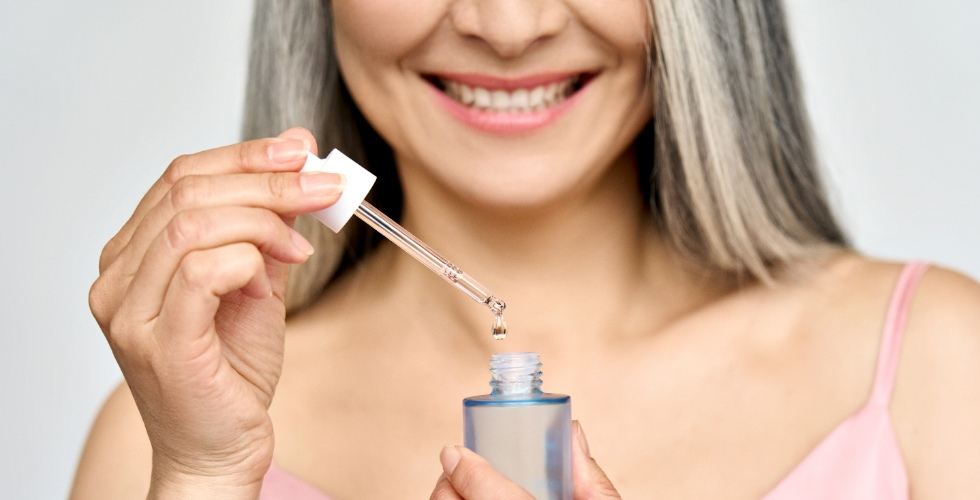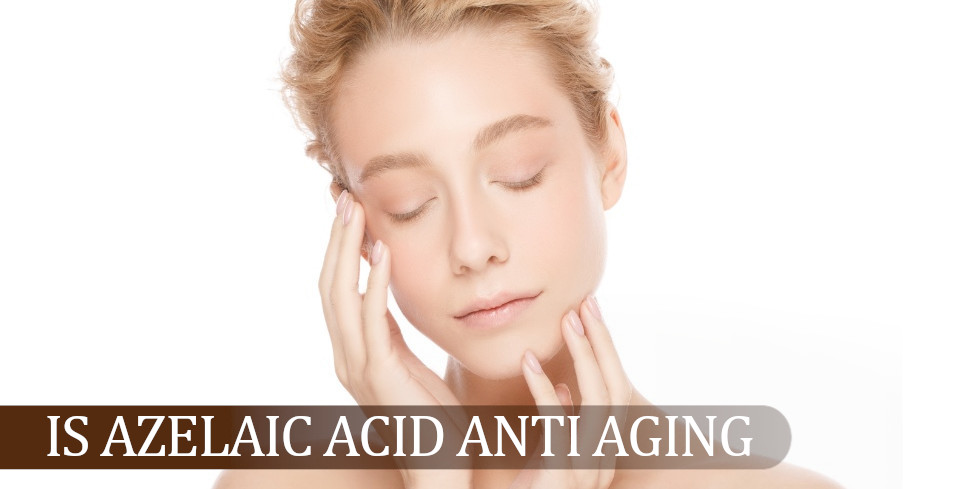If you’ve been looking for a way to enhance your anti-aging skincare routine, then azelaic acid is an ingredient that has likely cropped up in your research.
However, with the word “acid” in its name, people often end up confused – what exactly does azelaic acid do, and can it really make a difference to the skin aging process? Read on to learn everything that you need to know about this much-loved skincare ingredient.
Contents
- What is Azelaic Acid?
- What is Azelaic Acid Good for? A Closer Look at Its Benefits & Before and After Results
- How Long Does Azelaic Acid Take to Work? Here’s How Often to Use Azelaic Acid Products (and Which Percentage & pH to Choose) for Best Results
- Mixing Ingredients: Can I Use Azelaic Acid with BHA? And Can I Use Azelaic Acid with Vitamin C?
- FAQ
- Does azelaic acid promote collagen?
- Which acid is best for anti-aging?
- Is azelaic acid better than retinol?
- What does azelaic acid do for your face?
- Is azelaic acid an antioxidant?
- Is azelaic acid a retinoid?
- Can I use azelaic acid after AHA BHA peel?
- Should azelaic acid be used in the morning or night?
- Does azelaic acid cause purging?
- Azelaic acid vs glycolic acid – which is better for anti-aging?
- Conclusion: Is It Worth Adding an Azelaic Acid Serum or Cream to Your Anti-Aging Routine?
What is Azelaic Acid?
Azelaic acid is a compound that’s naturally produced by healthy skin. It can also be extracted from grains, such as wheat, barley, and rye.

However, when it comes to the azelaic acid used in skincare products, this is usually produced in a lab. This enables companies to have full control over potency, stability, efficacy, and consistency in each and every product.
What Type of Acid is Azelaic Acid? Is Azelaic Acid an Exfoliant & is Azelaic Acid an AHA?
Azelaic acid is classed as a dicarboxylic acid, not as an alpha hydroxy acid (AHA). However, like hydroxy acids, azelaic acid is able to unclog the pores and treat whiteheads and blackheads.
That said, although there are a few similarities between azelaic acid and alpha-hydroxy acids, they are fundamentally very different ingredients. Azelaic acid is not as effective at exfoliating as AHAs, but it’s so much more powerful when it comes to boosting cell turnover and treating other skin concerns.
Azelaic acid is also an antioxidant, making it fantastic for neutralizing damaging free radicals in the skin.
What is Azelaic Acid Good for? A Closer Look at Its Benefits & Before and After Results
So, if azelaic acid is different from AHAs, what exactly does it do? Let’s take a closer look at its benefits, along with the proven ways in which it can transform the skin:
Treats Dark Spots, Melasma & Other Forms of Hyperpigmentation
Research shows that azelaic acid is able to inhibit the production of melanin in the skin [R]. This allows it to treat all types of hyperpigmentation, including melasma and dark spots caused by sun damage.
Fades Acne Scars
Due to how it encourages cell turnover, azelaic acid is often recommended as a way to reduce the severity of acne scarring. The way in which it suppresses excess melanin production also helps to make acne scars lighter and less noticeable.
Helps with Rosacea
There aren’t many ingredients that can help with rosacea, which is why azelaic acid is such a standout. Studies have found that both gels and creams containing the ingredient are highly effective at reducing the inflammation associated with rosacea flare-ups [R].
Diminishes Fine Lines & Wrinkles on Mature Skin – Ideal for People Over 50!
With azelaic acid capable of significantly boosting both cell turnover and collagen production [R], it’s also able to reduce the appearance of fine lines and wrinkles while evening out the skin tone at the same time. The result? Skin that looks smoother, brighter, and younger.

How Long Does Azelaic Acid Take to Work? Here’s How Often to Use Azelaic Acid Products (and Which Percentage & pH to Choose) for Best Results
Unlike some of the other popular skincare ingredients out there, azelaic acid doesn’t produce instant results – it needs a little time to work. You may start seeing results after two months of use, but it could take up to four months before your skin improves.
Of course, this also depends on how often you use the ingredient, as well as how much of it you use. Most of the azelaic acid studies that have been carried out have used products containing between 15-20% of the ingredient, but this would only be available via prescription.

That said, 10% concentrations are also known to be very effective when used twice daily, and this is much easier to find in over-the-counter products.
For best results, look for azelaic acid products with a pH of between 5.5 and 5.9. This closely matches the pH of human skin, meaning that your skin cells will be able to absorb the ingredient much more efficiently.
Mixing Ingredients: Can I Use Azelaic Acid with BHA? And Can I Use Azelaic Acid with Vitamin C?
Since azelaic acid doesn’t exfoliate in the same way as AHAs and BHAs, it’s safe to use the ingredient with hydroxy acids.
It’s safe to use azelaic acid with vitamin C too.
The only exception would be retinol – in order to avoid skin irritation, use your azelaic acid product during the day and your retinol at night. However, keep in mind that this will cause your azelaic acid product to take longer to work since it needs to be used twice a day for best results.
FAQ
Does azelaic acid promote collagen?
Yes, azelaic acid helps to promote collagen production in the skin.
Which acid is best for anti-aging?
Glycolic acid is considered to be the best acid for anti-aging.
Is azelaic acid better than retinol?
In some ways, yes – azelaic acid is better than retinol when it comes to treating acne and rosacea, mainly because high concentrations don’t trigger side effects. However, retinol is more effective when it comes to treating wrinkles.
What does azelaic acid do for your face?
Azelaic acid refines skin texture, reduces blemishes, hyperpigmentation, and scarring, and soothes inflammation.
Is azelaic acid an antioxidant?
Yes, azelaic acid is an antioxidant.
Is azelaic acid a retinoid?
No, azelaic acid is not a retinoid.
Can I use azelaic acid after AHA BHA peel?
Yes, it’s safe to use azelaic acid after using an AHA BHA peel.
Should azelaic acid be used in the morning or night?
For best results, azelaic acid should be used twice a day, in the morning and at night.
Does azelaic acid cause purging?
Yes. Due to how it speeds up cell turnover, azelaic acid can cause your skin to purge.
Azelaic acid vs glycolic acid – which is better for anti-aging?
Glycolic acid is considered to be better for anti-aging, but azelaic acid works well too. Use them together for the best results.
Conclusion: Is It Worth Adding an Azelaic Acid Serum or Cream to Your Anti-Aging Routine?
Although primarily used as a way to treat hyperpigmentation and inflammation, azelaic acid offers up some impressive anti-aging properties too. Since it plays well with most other anti-aging ingredients, azelaic acid is one that’s definitely worth adding to your skincare routine if you’re striving for a smoother, firmer and brighter complexion.
